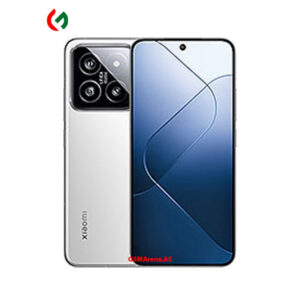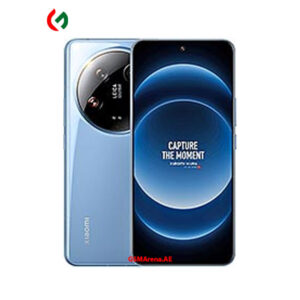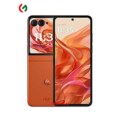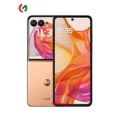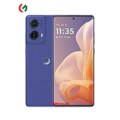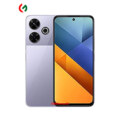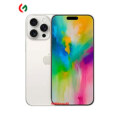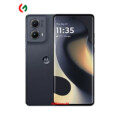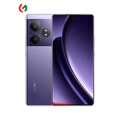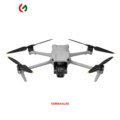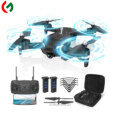- Home
- GSMArena UAE
- Compare
- Compare Xiaomi 14 vs. Xiaomi 14 Ultra
Compare Xiaomi 14 vs. Xiaomi 14 Ultra
Xiaomi 14 vs. Xiaomi 14 Ultra are both smartphones from Xiaomi, but they cater to slightly different segments of the market. Here’s a comparison between the two:
- Display: The Xiaomi 14 Ultra typically features a larger and more advanced display compared to the regular Xiaomi 14. It might have a higher resolution, refresh rate, and possibly better display technology like OLED.
- Camera: The Xiaomi 14 Ultra usually boasts a more advanced camera setup with higher megapixel counts, better sensors, and additional camera features compared to the regular Xiaomi 14.
- Performance: While both phones are likely to offer high performance, the Xiaomi 14 Ultra might come with a more powerful processor and more RAM/storage options, catering to users who demand top-notch performance.
- Design: The design aesthetics might differ between the two models, with the Xiaomi 14 Ultra possibly featuring more premium materials or a sleeker design compared to the regular Xiaomi 14.
- Battery and Charging: The Xiaomi 14 Ultra may come with a larger battery capacity and faster charging capabilities compared to the regular Xiaomi 14.
- Price: Due to the enhanced features and specifications, the Xiaomi 14 Ultra is likely to be priced higher than the regular Xiaomi 14.
Xiaomi 14 vs. Xiaomi 14 Ultra
Overall, the Xiaomi 14 Ultra is positioned as a more premium offering with better features and specifications compared to the regular Xiaomi 14, appealing to users who are willing to pay a premium for top-of-the-line performance and features.
Build
| OS | Android 14 Android 14 |
| UI | HyperOS HyperOS |
| Dimensions | 152.8 x 71.5 x 8.2 mm 161.4 x 75.3 x 9.2 mm (6.35 x 2.96 x 0.36 in) |
| Weight | 188 g or 193 g 224.4 g or 229.5 g (7.94 oz) |
| SIM SIM (Subscriber Identity Module) is a small card that contains mobile network subscriber's account information. This allows the phone using the card to attach to a mobile network. The SIM card is most commonly associated with GSM and UMTS mobile networks. Moving a SIM card from one phone to another allows a subscriber to switch mobile phones without having to contact their mobile network carrier. SIM cards can also be used by a phone to store limited amounts of data, such as phone numbers and text messages. | Nano-SIM and eSIM or Dual SIM (Nano-SIM, dual stand-by) Dual SIM (Nano-SIM, dual stand-by) |
| Colors | Black, White, Jade Green, Pink Black, Blue, White, Titanium Gray |
Frequency
| 2G Band |
GSM 850 / 900 / 1800 / 1900 - SIM 1 & SIM 2 CDMA 800 GSM 850 / 900 / 1800 / 1900 - SIM 1 & SIM 2 CDMA 800 |
| 3G Band | HSDPA 800 / 850 / 900 / 1700(AWS) / 1900 / 2100 CDMA2000 1x HSDPA 800 / 850 / 900 / 1700(AWS) / 1900 / 2100 CDMA2000 1xEV-DO |
| 4G Network |
1, 2, 3, 4, 5, 7, 8, 12, 13, 17, 18, 19, 20, 25, 26, 28, 32, 38, 39, 40, 41, 42, 48, 66 - International 1, 3, 4, 5, 8, 18, 19, 26, 28, 34, 38, 39, 40, 41, 42, 48, 66 - China 1, 3, 4, 5, 7, 8, 18, 19, 26, 28, 34, 38, 39, 40, 41, 42, 48, 66 - China |
| 5G Band | 1, 2, 3, 5, 7, 8, 20, 25, 28, 38, 40, 41, 48, 66, 75, 77, 78 SA/NSA - International 1, 3, 5, 8, 28, 38, 40, 41, 48, 66, 77, 78 SA/NSA - China 1, 3, 5, 7, 8, 28, 38, 40, 41, 48, 66, 77, 78, 79 SA/NSA - China |
Processor
| CPU CPU (Central Processing Unit) mostly known as processors, CPU processes instructions in order to carry out certain functions that make your device operate properly. Processors are often described as the brain of computers, smartphones and tablets, Smartphones and tablets rely on processors to carry out their every task, Processors are an incredibly important factor in selecting any type of computing device, including your smartphone. | Octa-core (1x3.3 GHz Cortex-X4 & 3x3.2 GHz Cortex-A720 & 2x3.0 GHz Cortex-A720 & 2x2.3 GHz Cortex-A520) Octa-core (1x3.3 GHz Cortex-X4 & 3x3.2 GHz Cortex-A720 & 2x3.0 GHz Cortex-A720 & 2x2.3 GHz Cortex-A520) |
| Chipset Chipset is a group of integrated circuits designed to perform one or a more dedicated functions, often with real time computing constraints, Popular smartphones are equipped with more advanced embedded chipsets that can do many different tasks depending on their programming. | Qualcomm SM8650-AB Snapdragon 8 Gen 3 (4 nm) Qualcomm SM8650-AB Snapdragon 8 Gen 3 (4 nm) |
| GPU GPU (Graphics Processing Unit) is a single-chip processor designed to rapidly manipulate and alter memory to accelerate the creation of images in a frame buffer intended for output to a display, This includes things such as lighting effects, object transformations, and 3D motion. | Adreno 750 Adreno 750 |
Display
| Technology | LTPO OLED LTPO AMOLED |
| Size | 6.36 inches, 97.6 cm2 (~89.3% screen-to-body ratio) 6.73 inches, 108.9 cm2 (~89.6% screen-to-body ratio) |
| Resolution | 1200 x 2670 pixels, 20:9 ratio (~460 ppi density) 1440 x 3200 pixels, 20:9 ratio (~522 ppi density) |
| Protection | Corning Gorilla Glass Victus Xiaomi Longjing Glass |
| Extra Features | 68B colors, 120Hz, Dolby Vision, HDR10+, 1000 nits (typ), 3000 nits (peak) 68B colors, 120Hz, Dolby Vision, HDR10+, 3000 nits (peak) |
Memory
| Built-in | 256GB 8GB RAM, 256GB 12GB RAM, 512GB 12GB RAM, 512GB 16GB RAM, 1TB 16GB RAM UFS 4.0 256GB 12GB RAM, 512GB 16GB RAM, 1TB 16GB RAM UFS 4.0 |
| Card Slot Memory Card Slot is a special slot for inserting a memory card. Memory cards allow you to expand the phone's built-in memory, A memory card (sometimes called a flash memory card or a storage card) is a small storage medium used to store data such as text, pictures, audio, and video, for use on small, portable or remote computing devices such as mobile phones, mp3 players, digital cameras. | No No |
Camera
| Main |
Triple 50 MP, f/1.6, 23mm (wide), 1/1.31", 1.2µm, dual pixel PDAF, Laser AF, OIS 50 MP, f/2.0, 75mm (telephoto), PDAF (10cm - ∞), OIS, 3.2x optical zoom 50 MP, f/2.2, 14mm, 115˚ (ultrawide) Quad 50 MP, f/1.6 or f/4.0, 23mm (wide), 1.0"-type, 1.6µm, multi-directional PDAF, Laser AF, OIS 50 MP, f/2.5, 120mm (periscope telephoto), 1/2.51", Dual-Pixel PDAF (30cm - ∞), OIS, 5x optical zoom 50 MP, f/1.8, 75mm (telephoto), 1/2.51", Dual-Pixel PDAF (10cm - ∞), OIS, 3.2x optical zoom 50 MP, f/1.8, 12mm, 122˚ (ultrawide), 1/2.51", Dual-Pixel PDAF TOF 3D, (depth) |
| Features |
Features Leica lens, Dual-LED dual-tone flash, HDR, panorama Video 8K@24fps (HDR), 4K@24/30/60fps (HDR10+, 10-bit Dolby Vision HDR, 10-bit LOG), 1080p@30/60/120/240/960fps, 720p@1920fps, gyro-EIS Features Leica lenses, Dual-LED flash, HDR, panorama, 67mm filter ring holder (optional) Video 8K@24/30fps, 4K@24/30/60/120fps, 1080p@30/60/120/240/480/960/1920fps, gyro-EIS, Dolby Vision HDR 10-bit rec. (4K@60fps, 1080p) |
| Front | Single 32 MP, (wide) Features HDR, panorama Video 4K@30/60fps, 1080p@30/60fps, gyro-EIS Single 32 MP, f/2.0, 22mm (wide), 0.7µm Features HDR, panorama Video 4K@30/60fps, 1080p@30/60fps |
Connectivity
| WLAN | Wi-Fi 802.11 a/b/g/n/ac/6e/7, dual-band, Wi-Fi Direct Wi-Fi 802.11 a/b/g/n/ac/6e/7, tri-band, Wi-Fi Direct |
| Bluetooth Bluetooth is a wireless communications technology for exchanging data between mobile phones, headsets, computers and other network devices over short distances without wires, Bluetooth technology was primarily designed to support simple wireless networking of personal consumer devices. | 5.4, A2DP, LE, aptX HD, aptX Adaptive 5.4, A2DP, LE, aptX HD, aptX Adaptive, LHDC |
| GPS GPS The Global Positioning System is a satellite-based radio navigation system, GPS permits users to determine their position, velocity and the time 24 hours a day, in all weather, anywhere in the world, In order to locate your position, your device or GPS receiver must have a clear view of the sky. | GPS (L1+L5), GLONASS (G1), BDS (B1I+B1c+B2a), GALILEO (E1+E5a), QZSS (L1+L5), NavIC (L5) GPS (L1+L5), GLONASS (L1), BDS (B1I+B1c+B2a), GALILEO (E1+E5a), QZSS (L1+L5), NavIC (L5) |
| Radio | No No |
| USB | USB Type-C 2.0, USB On-The-Go USB Type-C 3.2, DisplayPort, OTG |
| NFC NFC (Near field communication) is a set of standards for smartphones and similar devices to establish peer-to-peer radio communications with each other by touching them together or bringing them into proximity, usually no more than a few inches. | |
| Data | GPRS, Edge, 3G (HSPA 42.2/5.76 Mbp), LTE-A, 5G capable GPRS, Edge, 3G (HSPA 42.2/5.76 Mbp), LTE-A, 5G capable |
Features
| Sensors Sensors are electronic components that detects and responds to some type of input from the physical environment. The specific input could be light, heat, motion, moisture, pressure and location, The output is generally a signal that is converted to use in computing systems, a location sensor, such as a GPS receiver is able to detect current location of your electronic device. | Accelerometer, Compass, Fingerprint (under display, optical), Gyro, Proximity, Virtual proximity sensing Accelerometer, Compass, Fingerprint (under display, optical), Gyro, Proximity, Virtual proximity sensing |
| Audio | Loudspeaker Yes, with stereo speakers 3.5mm jack No 24-bit/192kHz audio 24-bit/192kHz audio, Tuned by Harman Kardon, Speaker Phone |
| Browser | HTML5 HTML5 |
| Messaging | SMS(threaded view), MMS, Email, Push Mail, IM SMS(threaded view), MMS, Email, Push Mail, IM |
| Games | Built-in + Downloadable Built-in + Downloadable |
| Extra |
Photo/video editor, Document viewer , IP68 dust/water resistant (up to 1.5m for 30 min) IP68 dust/water resistant (up to 1.5m for 30 min) |
Battery
| Battery Type Battery Type => Cell phones run on various kinds of batteries depending on the manufacturer, phone size or shape and features. There are basically four types of cell phone batteries => Lithium Polymer, Lithium Ion, Nickel Metal Hydride and Nickel Cadmium. | Li-Po Non removable - 4610 mAh 5300 mAh, non-removable |
| Charging | 90W wired, PD3.0, QC4, 100% in 31 min (advertised) 50W wireless, 100% in 46 min (advertised) 10W reverse wireless 90W wired, PD3.0, QC4, 100% in 35 min (advertised) 80W wireless, 100% in 49 min (advertised) 10W reverse wireless |


|
